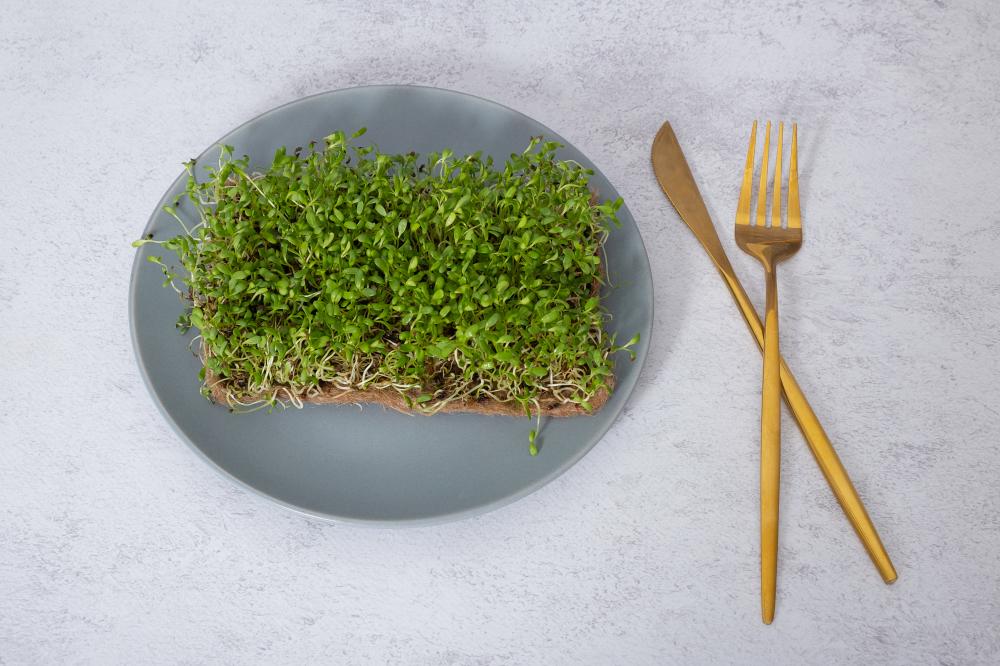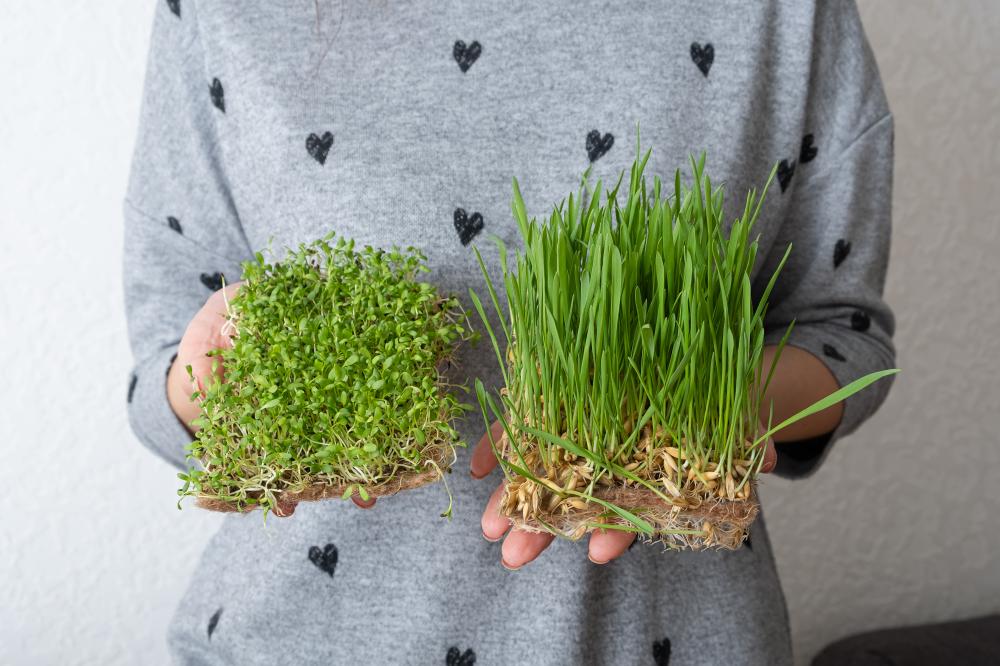Contents
- 1 Introduction to the World of Microgreens
- 2 Microgreens: Nutritional Powerhouses
- 3 The Ecological Impact of Microgreens
- 4 Unleashing Culinary Creativity with Microgreens
- 5 The Joy of Growing Your Own Microgreens
- 6 Fostering Community Through Microgreens
- 7 Embracing the Benefits of Microgreens
- 8 Can you eat microgreens every day?
- 9 What is the biggest benefit to microgreens?
- 10 Is microgreen a Superfood?
- 11 Which microgreen is the healthiest?
- 12 What is the ecological impact of growing microgreens?
- 13 Can microgreens be grown hydroponically?
- 14 How can one integrate microgreens into their daily meals?

Introduction to the World of Microgreens
At Lettuce Be Farmers, we’ve seen firsthand the transformative power of gardening, particularly through the lens of growing microgreens. A treasure trove of nutrition, flavor, and vibrant color, microgreens have revolutionized the way we think about food and sustainability. This article delves into the benefits of microgreens, exploring how these tiny plants can make a substantial impact on your health, environment, and culinary adventures.
Microgreens: Nutritional Powerhouses
Understanding the Nutrient Density
Microgreens are not just miniature plants; they are a concentrated source of nutrients. Studies have shown that microgreens can contain up to 40 times the nutrients of their mature counterparts. This means a small handful of these greens can pack a nutritional punch equivalent to several servings of full-grown vegetables. From vitamins A, C, E, and K to essential minerals like iron and magnesium, microgreens are a one-stop shop for boosting your daily nutrient intake.
Antioxidants Galore
The benefits of microgreens extend beyond their vitamin and mineral content; they are also rich in antioxidants. Antioxidants play a crucial role in neutralizing harmful free radicals, reducing inflammation, and preventing chronic diseases. Incorporating microgreens into your diet is a delicious way to harness these health-boosting properties.
The Ecological Impact of Microgreens
Reducing Food Miles
One aspect of microgreens that inspires us at Lettuce Be Farmers is their minimal ecological footprint. Growing microgreens at home or supporting local microgreen farmers can significantly reduce the food miles associated with transporting produce from farm to table. This not only results in fresher food but also lessens the carbon emissions tied to transportation.
Water Wise
Microgreens are also champions of water efficiency. They require significantly less water than traditional crops, making them an ideal choice for areas facing water scarcity. Our exploration into hydroponics has shown that combining these two sustainable practices can maximize water efficiency while ensuring a steady supply of fresh microgreens.
Unleashing Culinary Creativity with Microgreens
The versatility of microgreens in the kitchen is truly remarkable. Their range of flavors, from peppery to tangy, can elevate the simplest dishes to culinary masterpieces. Whether you’re garnishing a gourmet meal, adding them to smoothies, or incorporating them into salads and sandwiches, microgreens offer a world of possibilities for creative cooking. They not only enhance the flavor profile of dishes but also add a splash of color and texture, making every meal a feast for the eyes.
The Joy of Growing Your Own Microgreens
A Garden in Any Space
Perhaps one of the most enticing benefits of microgreens is the ease with which they can be grown. They require very little space, making them perfect for urban gardeners or those with limited outdoor areas. At Lettuce Be Farmers, we’ve guided countless individuals through the process of setting up their microgreen gardens, proving that you don’t need a green thumb to grow your own nutritious and delicious greens.
The Therapeutic Nature of Gardening
Beyond the tangible benefits of microgreens lies the intangible joy of gardening itself. Engaging with soil and seeds, even on a miniature scale, can be incredibly therapeutic. It offers a unique combination of physical activity, relaxation, and satisfaction that comes from nurturing growth. This connection to nature can significantly enhance mental health and wellbeing.
Fostering Community Through Microgreens
The benefits of microgreens extend into the realm of community engagement and education. Sharing harvests, swapping tips with fellow gardeners, and participating in local farmers’ markets are just a few ways microgreens can help build community ties. At Lettuce Be Farmers, we’ve witnessed the powerful sense of belonging and mutual support that arises from a shared passion for gardening. This underscores the broader societal benefits of microgreens, demonstrating how these tiny plants can bring people together, fostering a more sustainable and connected world.
Embracing the Benefits of Microgreens
As we’ve explored, the benefits of microgreens are vast and varied. From their impressive nutritional profile and ecological advantages to their culinary versatility and the joy of gardening, microgreens offer something for everyone. At Lettuce Be Farmers, we’re committed to spreading the word about these remarkable plants. We encourage everyone to experience the manifold benefits of microgreens, whether by growing them at home, supporting local producers, or simply incorporating them into your diet. Together, let’s embrace the greener side of life, one microgreen at a time.

Can you eat microgreens every day?
Absolutely, you can incorporate microgreens into your daily diet, and in fact, doing so can significantly boost your intake of essential nutrients and antioxidants. Consider the variety of microgreens available, from radish to arugula; each offers a unique flavor and nutritional profile. By rotating the types of microgreens you consume, not only do you keep your meals interesting, but you also ensure a diverse intake of vitamins and minerals. Remember to wash them thoroughly before consumption, as you would with any produce. Integrating microgreens into different meals, be it smoothies or as a garnish on your favorite dishes, is a delightful way to enhance both the nutrition and presentation of your food.
What is the biggest benefit to microgreens?
The nutritional density of microgreens is arguably their biggest benefit. Their concentration of vitamins, minerals, and antioxidants is significantly higher compared to their mature plant counterparts. This dense nutrient profile means that even a small quantity of microgreens can contribute meaningfully to your daily nutritional requirements. For those looking to enrich their diet without the need to consume large volumes of vegetables, microgreens offer a convenient and efficient solution. They embody the essence of “less is more” when it comes to boosting your health through diet.
Is microgreen a Superfood?
While the term “superfood” is not scientifically defined, it’s commonly used to describe foods that are rich in nutrients and beneficial to one’s health. By this definition, microgreens certainly qualify. Their high concentrations of vitamins, minerals, and antioxidants make them an exceptional addition to any diet, packing a powerful punch in a tiny package. Think of microgreens as nature’s multi-vitamin. The impressive nutritional profile of these young plants can support immune function, reduce inflammation, and potentially protect against certain diseases. So, while “superfood” might be a marketing term, it’s a hat that microgreens wear quite well.
Which microgreen is the healthiest?
Identifying the “healthiest” microgreen is a bit like trying to pick the healthiest star in the galaxy; each shines brightly in its own way. For instance, broccoli microgreens are renowned for their cancer-fighting compounds, while pea shoots boast high levels of vitamins A and C. Red cabbage microgreens, on the other hand, are packed with vitamin K and anthocyanins. The key is to embrace variety. Each type of microgreen has a unique nutrient profile, so by including a range in your diet, you ensure a broad spectrum of health benefits. It’s this diversity that can contribute to a well-rounded and nutrient-rich diet.
What is the ecological impact of growing microgreens?
The ecological footprint of microgreens is impressively low, making them an eco-friendly option for the health-conscious consumer. Their small size and rapid growth cycle allow for high-density cultivation, even in unconventional spaces like urban apartments or reclaimed industrial areas. This local approach to growing reduces the need for transportation, dramatically cutting down on carbon emissions. Furthermore, microgreens can be grown using minimal water compared to traditional crops, making them a sustainable choice for areas facing water scarcity. When we grow microgreens, we’re not just cultivating nutrition but also stewarding our planet’s resources responsibly.
Can microgreens be grown hydroponically?
Indeed, microgreens thrive in hydroponic systems, which don’t require soil but instead use a nutrient-rich water solution to grow plants. This method of cultivation is not only clean and efficient but also allows for control over the growing environment, often resulting in faster growth rates and higher yields. At Lettuce Be Farmers, we’ve explored combining microgreens with hydroponics to maximize water efficiency and minimize our ecological footprint. This synergy between cutting-edge agricultural technology and nature’s ingenuity embodies the innovative spirit of sustainable farming. Whether you’re a seasoned gardener or a newcomer to the world of hydroponics, growing microgreens in this way can be a rewarding and eco-friendly venture.
How can one integrate microgreens into their daily meals?
Microgreens offer a versatile and vibrant addition to nearly any dish. Start your day by blending them into a nutrient-packed smoothie or layering them atop scrambled eggs. For lunch and dinner, microgreens make a great topping for soups, pizzas, and sandwiches, adding a burst of flavor and color. They’re also perfect as a garnish on your favorite entrees, bringing a fresh, gourmet touch to even the simplest of meals. Don’t be afraid to experiment; the subtle yet distinct flavors of microgreens can elevate your cooking in unexpected and delightful ways. Remember, the journey of integrating microgreens into your diet is not just about nutrition; it’s about discovering the joy and creativity of cooking with these tiny but mighty plants.
Resources
- Nutrient Content of Microgreens – A study on the nutrient density of microgreens and their potential health benefits.
- Antioxidants in Microgreens – Information on the antioxidant properties of microgreens and their role in promoting health.
- Ecological Benefits of Microgreens – An article discussing the ecological impact of growing microgreens and their sustainability advantages.
- Culinary Uses of Microgreens – A resource highlighting the various ways microgreens can be incorporated into a wide range of dishes for added flavor and nutrition.
- Guide to Growing Microgreens – Tips and instructions for growing your own microgreens at home, including different methods and plant varieties.

